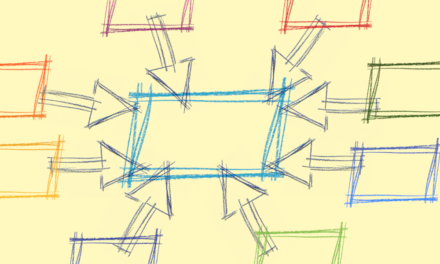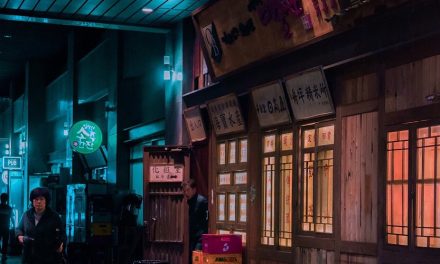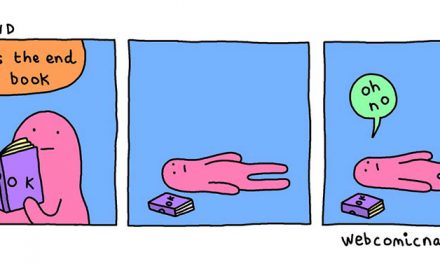or, An Honest Look at Hidden Works
The rise of online communities over the past twenty years has done wonders for artists, particularly amateur or self-taught ones, in finding community and support networks they may not have—or feel comfortable sharing with—in the offline space. This has made the barrier for entry across all media extremely low, making the creation of art more accessible. Whether it’s music, drawing, or writing, almost anyone with an internet connection can put their work online.
While the increase in access has broadened the voices and styles on display, it has also greatly amplified the number of voices and styles being displayed, making it difficult for any one individual to stand out. This has been an ongoing issue in print media, where the rise of self-publishing can often be seen at odds with traditional publishers. It also means “the Algorithm” has a much greater degree of control over whose work—and what subject matter—gets the most attention, in what is often a self-reinforcing cycle.
See the rise of the “shocked face” in popular YouTube video previews. One or two prominent early YouTubers did it, and those videos were or became popular, which means the algorithm associated that kind of thumbnail/preview with engagement. Then to compete, other video makers started making similar thumbnails, which helped them get more views, because that’s the type of content which was being promoted, which then reinforced that a particular style was “good” for the platform. It’s an ouroborous of shocked faces and “reaction” videos that shows no evidence of slowing.
You just sit down at the typewriter, open your veins, and bleed.
—Newspaper columnist Red Smith, on writing
Making art is hard. Making art that others appreciate is harder. Making art that others appreciate enough to pay you money for is exceptionally hard. Making art that others appreciate enough to pay you a living wage is akin to winning the lottery—albeit with longer odds and more blood, sweat, debt, and tears. And constant, crippling rejection.
Going back to the earliest days of artistic endeavor, patrons—individuals who supported artists—wanted to see themselves in the art, or at least to have the stories and themes they were interested in being the ones told. While we are far removed from the days of a single, rich benefactor housing and paying for the artist’s needs, the internet is a very distributed place, and that means artists of every stripe get requests left, right, and center, for particular types of content. Often, these suggestions from would-be patrons—from whence the popular artist-support site Patreon gets its name—come with financial backing. For some creators, this can be a lucrative source of income.
There are many forms of media, though typically drawn and written art are the most common stages, where some patrons will ask for the kinds of art that one isn’t likely to see openly advertised. Mature, suggestive, erotic, or even blatantly pornographic requests come in, and depending on the artist, some may be interested in creating that kind of content. For some artists, they have to balance what they feel comfortable creating with and the offer on the table. For others, it’s an easy “yes”. For some, it’s a hard “no.” For my perspective, as long as the artist is comfortable making the art, and there is no genuine potential for harm to come to anyone else because of it, I say let artists create whatever they want, and/or whatever their fans want.
It is wildly common for animators working on popular shows to draw the characters in situations, poses, or framing that is anything beyond the show’s normal themes, and this goes back to some of the earliest Disney animations. It’s something that fans of series have been doing since there were series to have fandoms for. Most innocently, it’s effective character study to draw them with thin or no clothing, and the merits—or lack thereof—are left as an exercise for the reader (pun intended).
Many students first take a creative writing course in High School—typically school years 9 through 12—and often the fledgling creatives are given the advice to “write what you know.” As teenagers, there’s only so much of the world they have directly encountered, only so many situations and experiences they can express. However, very often they know about popular media. Thus, whole online communities have sprung up for individuals—not necessarily of High School age, though many contributors are—to share their stories surrounding a particular set of well-known characters or stories, either putting them in new situations, inserting themselves as new characters, or mixing genres entirely. This also is not a new phenomenon. Miguel de Cervantes wrote a sequel/second half to Don Quixote in 1615 wherein which the titular character reads fan stories reinterpreting his life.
Seeing a thriving community of other individuals sharing or promoting similar ideas about characters they like can foster creativity, but for people dealing with a rush of new emotions and hormones, some of their expressions turn to the erotic.
The role of a writer is not to say what we can all say, but what we are unable to say.
—Anais Nin, essayist and erotica literary icon
There is something provocative about erotic art, and I don’t strictly refer to the subject matter. There is allure in the forbidden, and sex, sexuality, and what adults get up to behind closed doors is rarely spoken of in frank, honest, and open-minded dialogue, making art which suggests, addresses, or explicitly dives into these themes doubly attractive. This goes even moreso for those whose tastes, desires, or thoughts fall outside what they consider the societal norm to be, where art may be the only way they can experience or express how they feel.
Though the lengthy work done by Professor Alfred Kinsey and his researchers in the 1940s and 50s to understand the difference between what people said they did behind closed doors and what they actually did shows that “the norm” is a lot more broad than how it is presented in most media. This results in activities, desires, and urges that are actually quite common being sequestered or forced “underground” because they don’t fit the common perception of “the norm.”
It is necessary to recognize—and not every site, community, forum, collective, or online website does a good job of this, if at all—that erotic art, much as with any other fiction, is not real life. It may mirror, mimic, and even describe real events and situations, but it shouldn’t be used as a guide to romance, to sexuality, or to physicality. People engrossed in the Marvel Cinematic Universe understand that what they’re watching is not reality, but when it comes to the written word—particularly regarding topics or scenarios that readers have no practical knowledge of—it can be easy for some people to think that what is written is how real-world relationships or encounters do or should work.
Heck, just look at the number of people who read Fifty Shades of Gray and felt they suddenly had an understanding of BDSM culture or relationships. In that specific case, uninformed readers were actually two spheres removed from the source material; it was clear from the outset that the author had no actual knowledge of the subculture either.
Recently, a friend of mine sheepishly asked if, as a writer, if I had ever penned “smutty” content. I openly admitted that I had indeed written erotica on occasion, both for personal entertainment and for sharing to some select audiences. It’s nothing I feel shame or embarrassment at; to me it’s just another genre to explore, albeit one with the generally specific goal of attempting to titillate or arouse the reader.
She went on to explain that she was away from her boyfriend for some time and had thought that perhaps I was in possession of or knew where to find quality material to help ease her loneliness. Honestly, I didn’t need an explanation or justification, same as with any of my other writings. She felt I needed one though, or perhaps she needed one herself, and that’s okay. Again, no judgment.
I thought about some of the pieces I’d written—mostly some years ago—and what I knew of her proclivities, and decided that they wouldn’t quite do. It is a very freeing experience to be able to have honest, grounded conversations about sex, attraction, and relationships with someone else, particularly someone who has different experiences than one’s own. I highly encourage others to be more open—and potentially vulnerable—with confidants.
Thus, I opened up a blank page and started typing.
Writing is thinking. To write well is to think clearly. That’s why it’s so hard.
—David McCullough, two-time Pulitzer Prize recipient
I decided to write from my own experiences instead of conjuring scenes out of whole cloth, and thought about which circumstances and experiences would best suit her stated needs. Several came to mind, and I set to writing. A little while later, I had two complete scenes with related but unique themes ready for her perusal.
As someone who thrives on external validation—says the author with a theatre degree and a history of public speaking—I was hoping she enjoyed what I wrote. My friend and I live on opposite sides of the globe which means my late-night was her early morning, so I had to wait until the next day for a response.
“Do you have any more?”
Needless to say, her having such a positive reaction to my work encouraged me to pen more—some from my own history, some not—and to start sharing it more broadly. First with a friend or two with whom I’ve discussed “taboo” topics before, and then in a slightly wider sweep to people with whom I have—or once had—a flirtatious relationship with, and who I thought would be at least interested.
Overall, the reaction has been nothing short of overwhelming. People have enjoyed my work and it has sparked a number of new and interesting conversations, including with some people I hadn’t spoken to in some time. It makes me feel good—validated—that my words have been so well-received. Not everyone was interested in getting copies of the works when I broached the topic—and again, no judgment there—but everyone who did express interest has given me very positive feedback on my stories.
Quo Vatimus?
“Where are we going?” is a question I often ask myself, and while I don’t always have an answer at hand, it often at least helps focus my thoughts toward getting an answer. When I started writing this post I knew I wanted to discuss the creation of erotica and the reasons some people create such art, and my own recent experience, but I didn’t really intend on diving into a longer explanation of the genre or touch on the overall topic of fandoms in general.
All of this is to say that it’s my intent to start posting some of my erotic written work to this site. It won’t show up on the main page or in the “related posts” section visible at the bottom of each entry, but the content will be available—clearly-labeled—under its own heading in the site menu. I want people to enjoy different aspects of fiction, but I also don’t want to ignore the fact that sex and sexuality remains a charged and uncomfortable subject for many.
Just to reiterate: so long as nobody is being harmed, I’m largely ambivalent as to what consenting adults get up to.
I think giving this kind of content some space on my main site does a bit more to validate it in my own eyes; no longer will I be editing text files which hide in arcane directory structures, but instead pointing people to a link on my blog, just as I do with so many of the other topics on which I opine. Maybe to some degree I hope it validates it in others’ minds as well, that erotica is a valid form of expression, and that the drives and needs we have as humans are okay to explore.
When will I start posting these stories, and will I be creating more? “Soon,” I’d say to the former, and “absolutely” to the latter.
Header image by whitedaemon from Pixabay.com, a wonderful source of royalty-free stock images















